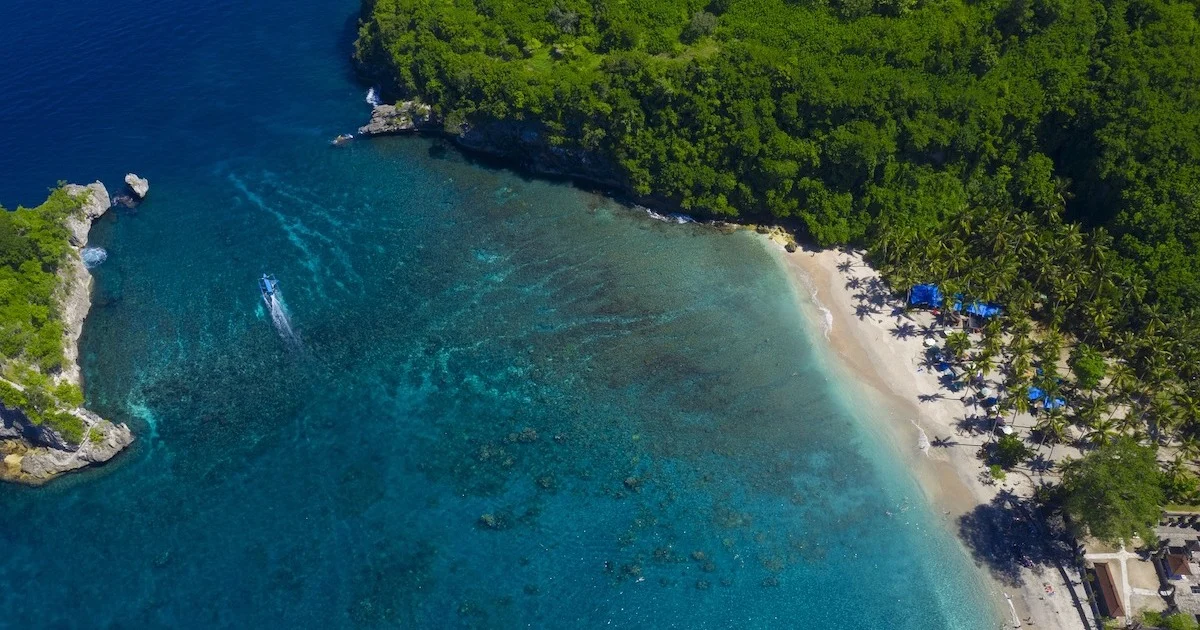Scoping out the best Nusa Penida snorkel spots, or wondering where you can see manta rays?
This Indonesian island is one of the best snorkelling locations near Bali.
It attracts sea life such as sea turtles, angelfish, clownfish, parrotfish, mola molas and, perhaps most significantly, manta rays — huge, gentle creatures with a wingspan of up to five metres.
To see manta rays, you’ll need to book a specific snorkelling trip to Manta Bay Nusa Penida. However, I will also discuss exactly how you can go snorkelling without a tour.
I’ve ranked the best Nusa Penida snorkel spots one by one, so let’s get stuck into it…
While you’re here, feel free to also check out my guides to the best beach in Nusa Penida.
Disclosure: This post includes affiliate links. If you decide to click through and make a qualifying purchase, I will receive a small commission at no extra cost to you – thanks for your support.
Which is Better for Snorkelling: Nusa Penida or Bali?
Bali and Nusa Penida are both located in what’s known as the Coral Triangle or ‘the Amazon of the Seas’.
This large area between southeast Asia and the Pacific Islands has excellent marine biodiversity.
Despite this, Nusa Penida is better for snorkelling for Bali. Why?
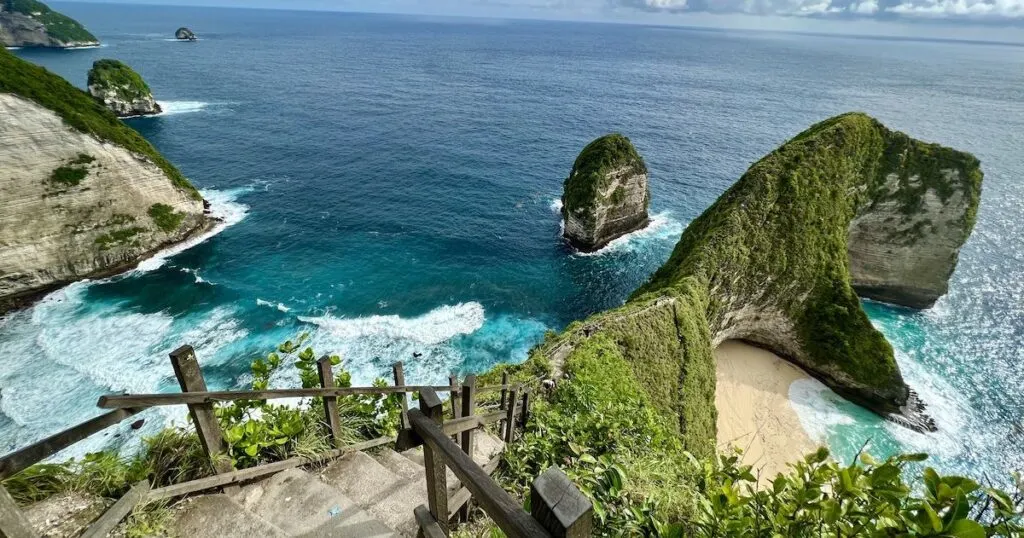
Firstly, many of the coral reefs in Bali have been damaged by boat activity. There aren’t many good snorkelling spots except for Padangbai in the west, including nearby Bias Tugel Beach.
Secondly, the ocean around Nusa Penida is less polluted. This is yet another impact of over-tourism in Bali.
Finally, strong Indo-Pacific currents actively move plankton towards Nusa Penida.
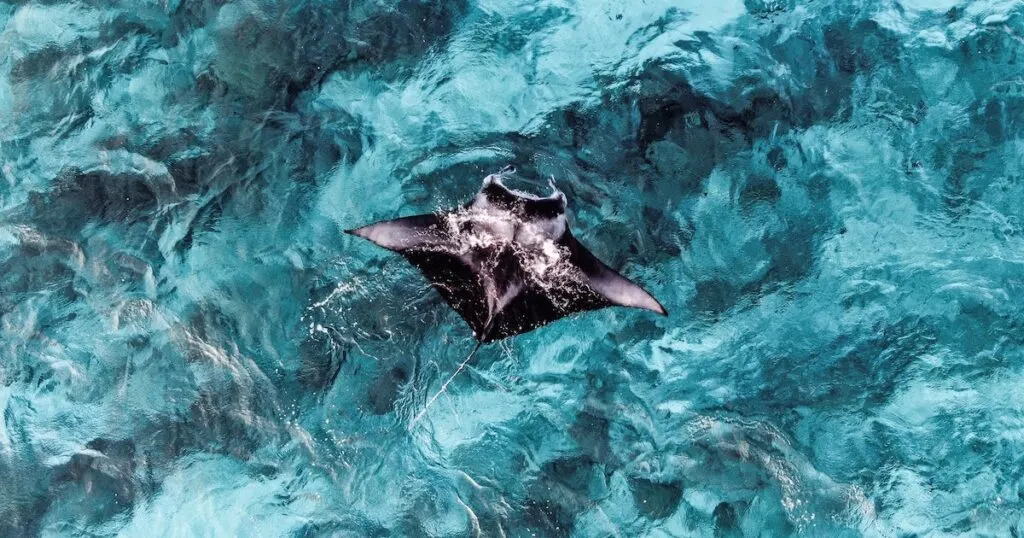
Manta rays chase and feed upon the plankton, which floats near the surface of the water.
The manta rays also attract more small fish, because many feed off of parasites and dead skin from the rays’ skin.
What Can You See at Nusa Penida Snorkel Spots?
Some species are more common than others.
However, these are some of the most regular sightings in Nusa Penida:
- Manta rays
- Sea turtles: green sea turtles, hawksbill sea turtles, and olive ridley sea turtles
- Clownfish
- Angelfish
- Butterfly fish
- Parrotfish
- Octopus
- Moray eels
- Puffer fish
- Rarer: Mola molas, one of the largest bony fishes in the world (weighing up to 5,000 lbs).
You may also come across harmless white-tip or black-tip reef sharks, although sightings are quite rare.
The Best Nusa Penida Snorkel Spots
1. Manta Bay
Best for: Snorkelling with manta rays
Location: West Nusa Penida
Manta Bay is the best place to see manta rays in Nusa Penida.
Located on the west of the island, it is a deep-water snorkelling site enclosed by rocky cliffs.
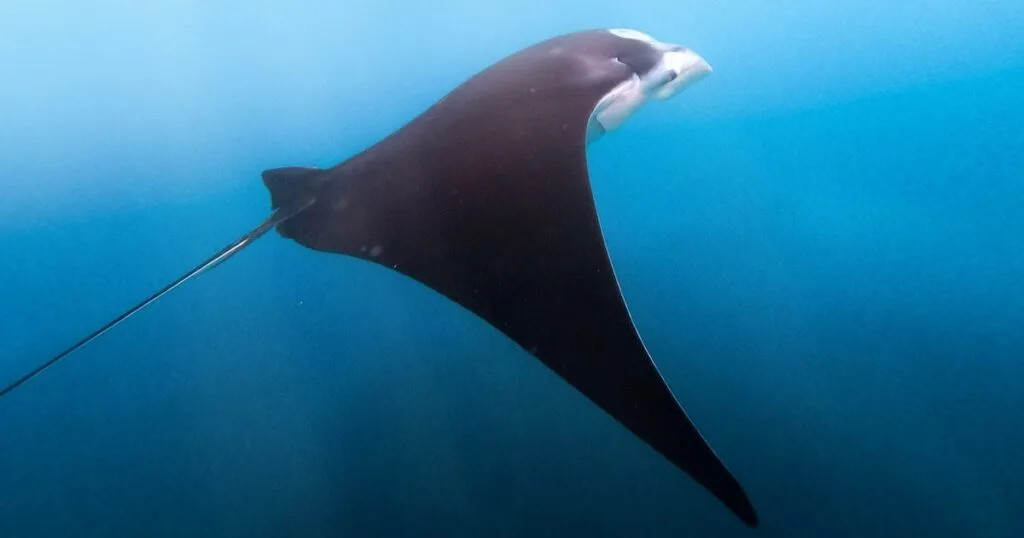
This means that there isn’t beach access, so the only way to get there is to take a manta ray snorkelling tour (departing from Nusa Penida or from Bali).
The ‘bay’ is popular with manta rays because it has large quantities of plankton.
Most days (but not every day), they feed there in the morning. On my trip, I was lucky enough to see four manta rays.
Tip: If the waves are strong, don’t be afraid to wear a lifejacket.
If you are taking a tour from Nusa Penida, you have the option of taking a shorter morning Manta Bay tour (with three snorkel sites) or taking the combined tour which adds on a land tour of west Nusa Penida.
I highly recommend taking a private Manta Bay tour if you can.
When I visited, the snorkelling site was extremely busy with boat tours — and bordering on chaotic — so I would have felt safer on a private tour.

Check out my full guide to Manta Bay Nusa Penida for exactly what to expect and your chances at seeing manta rays.
2. Crystal Bay
Best for: Snorkelling in Nusa Penida without a tour
Location: West Nusa Penida
If you don’t want do your Nusa Penida snorkel trip by boat, Crystal Bay is the best place to go.
Also known as being one of the best sunset views on the island, Crystal Bay is a popular spot on snorkelling tours.
However, you can also ride or drive there yourself, park next to the beach and snorkel out from the shore.
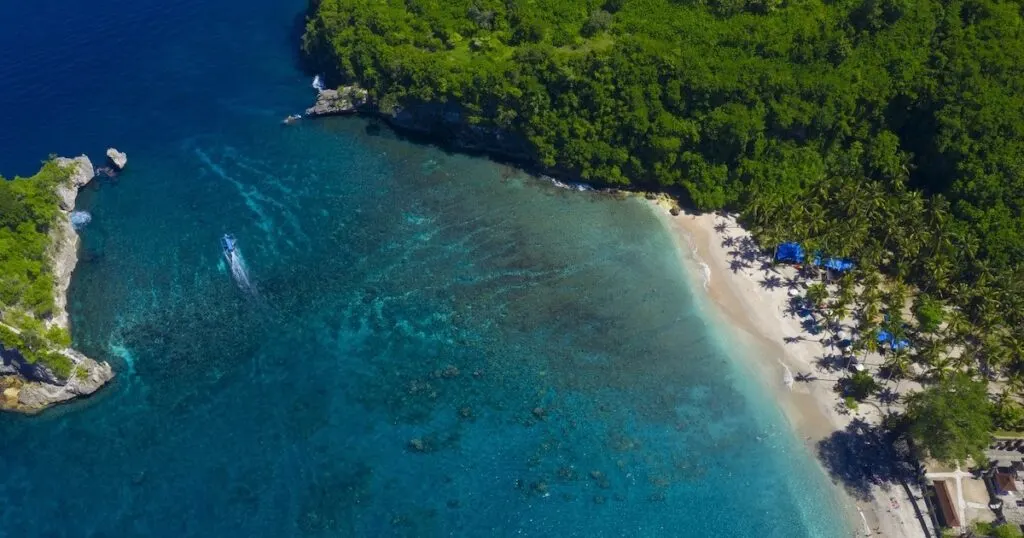
The beach is lined with warungs (typical Indonesian restaurants) and palm trees.
Many of the stalls hire out snorkelling equipment, but bring your own gear if you want to be sure of the quality.
The bay is pretty shallow and usually free from currents, so it is considered to be one of the safest swimming and snorkelling destinations on the island.
Sea turtles are occasionally spotted in the bay, but the coral and the fish are the main attractions.
Tip: Snorkel in the left corner of the bay to find the best corals. Get there early in the morning for the calmest conditions and fewer tour boats.
Crystal Bay features on most of the Manta Bay tours, including this private full-day Manta Bay tour.
3. Gamat Bay
Best for: The best beach snorkelling on the island
Location: West Nusa Penida
In my rankings for the best beach in Nusa Penida, I crowned Gamat Bay as the best snorkelling beach in Nusa Penida.
Why? Gamat Bay has some of the most colourful corals and reef fish on the west coast.
The wide bay is also generally very calm and has good visibility. The beach is accessible by a short trail from a road-side parking lot.
However, it also features on many of the island’s snorkelling tours.
You’ll need your own snorkelling gear for Gamat Bay if you’re coming by land because there aren’t many facilities.
There are some currents deeper out in the bay, so you may want to bring fins to give yourself more power.
Tip: Gamat Bay is easier to get to by boat, so consider visiting the coral gardens on a tour rather than by land.
4. Wall Bay Point
Best for: A long channel of corals and reef fish
Location: West Nusa Penida
Wall Bay Point, also referred to as ‘the Wall’ by locals, is another good snorkelling spot on the west of Nusa Penida.
It’s located between Toyapakeh Harbour and Manta Bay, so it commonly features on the snorkelling tours.
The location is only accessible by boat. Currents can be strong along the Wall, but the corals are vibrant, especially when there is good visibility.
Many locals claim that the Wall has the most fish on the island. If you’re lucky, you may also see manta rays swimming in the deeper channel of water.
Divers are lucky because they can access the deeper sections of the wall. The corals go quite deep underwater and hide creatures like moray eels and nudibranchs.
Tip: The current moves from right to left, so begin by snorkelling on the right-hand side of the wall so that the current works in your favour.
5. Turtle Point
Best for: Spotting turtles
Location: West Nusa Penida
Turtle Point isn’t as well-known as Manta Bay, Crystal Bay, Gamat Bay, and Wall Bay Point.
That has one main benefit: it’s less crowded.
Turtle Point is located slightly further south than Manta Bay, in a curved part of the coast just before Kelingking Beach.
The name is a giveaway. This is one of the best places on the island to witness sea turtles.
Tips: Don’t visit when the sea is rough. As this point of the island is fairly exposed, your snorkel guide can advise on whether the conditions are safe for snorkelling.
There aren’t many tours that visit Turtle Point. Your best bet is to enquire at your hotel or hostel.
Can You Snorkel at Manta Point?
Hang on: what about Manta Point?
You may have heard that you can snorkel at Manta Point in Nusa Penida, which is technically true. However, it is primarily a dive site.
From what I’ve heard from my diving friends, the currents are notoriously strong at Manta Point. That means that it’s far more dangerous to snorkel there.
Most snorkelling tours don’t visit Manta Point for this very reason.
Tips for Snorkelling in Nusa Penida
1. Bring your own snorkel gear
If there’s one thing I’ve learnt while snorkelling in southeast Asia, it’s that the snorkelling gear isn’t the best quality.
If you want well-fitting and leak-free equipment, the only way to guarantee it is to bring your own.
2. Wear a lifejacket if you’re not confident
I’m a big fan of the phrase ‘better safe than sorry’.
Wearing a life jacket on my snorkel trip at Nusa Penida was one of the best decisions I made.
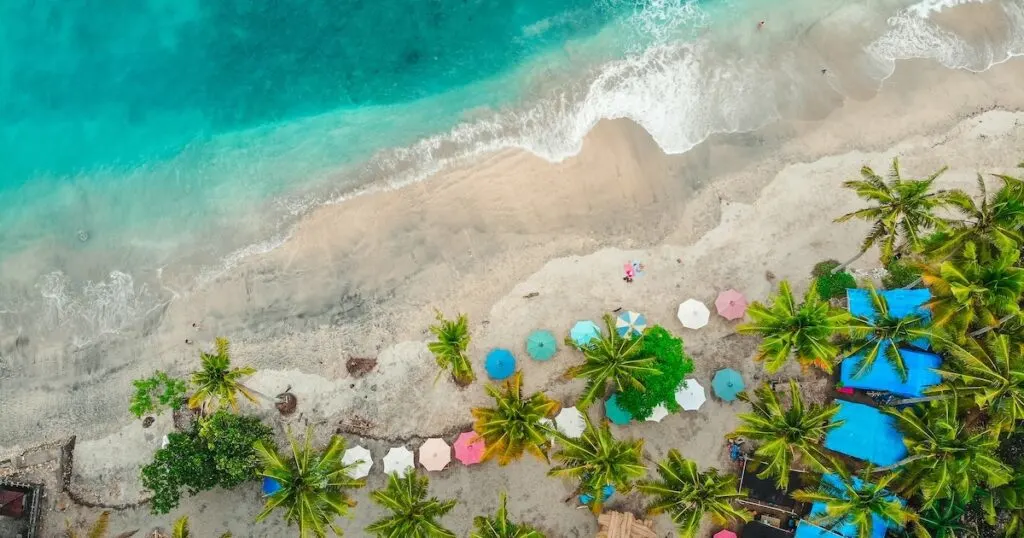
At the time, I wasn’t confident snorkelling in deep water. Plus, Manta Bay was very chaotic and had some big swells, so I made a decision to keep myself comfortable and safe.
I encourage you to do the same if you feel the need.
3. Learn about water safety
Most of the time, snorkelling in Nusa Penida is a walk in the park.
However, you should be aware that Nusa Penida is known for having very strong ocean currents.
Ask locals about the currents before swimming or snorkelling in a new location. The east side of the island is especially dangerous, so it’s best to stay out of the water altogether there.
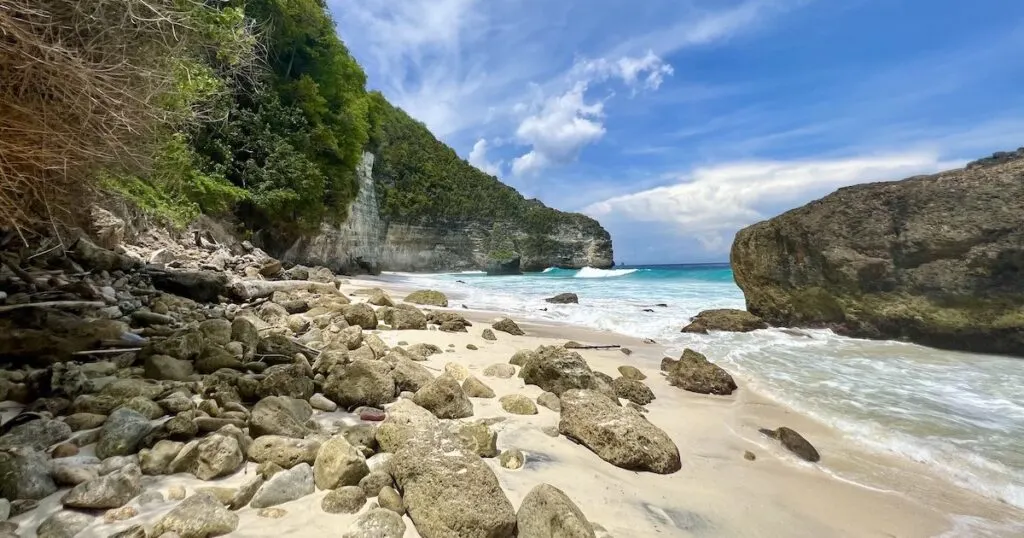
The number one rule of snorkelling is don’t touch any marine life (that includes the manta rays).
The main hazards at Nusa Penida are jellyfish. Like manta rays, jellyfish feed on plankton, so you’re likely to encounter them in the same places as manta rays.
Most of the jellyfish around the island aren’t dangerous. Box jellyfish (one of the more dangerous types) are very rare.
Lionfish, easily identifiable from a distance due to their mane of feather-like fins and long, venomous spines, are also venomous.
Stone fish and scorpion fish are rare but have been reported at Crystal Bay, so be careful where you step.
You can snorkel at Manta Bay, Gamat Bay, Crystal Bay and Wall Bay Point in Nusa Penida.
Two safe beaches for snorkelling on Nusa Penida are Crystal Bay and Gamat Bay on the west of the island.
There are jellyfish in Nusa Penida. The ocean is rich with plankton, which forms the majority of their diet. Most jellyfish species in Nusa Penida are not poisonous. Box jellyfish are very rare.
Rarely, you may see white-tip or black-tip reef sharks around Nusa Penida.

